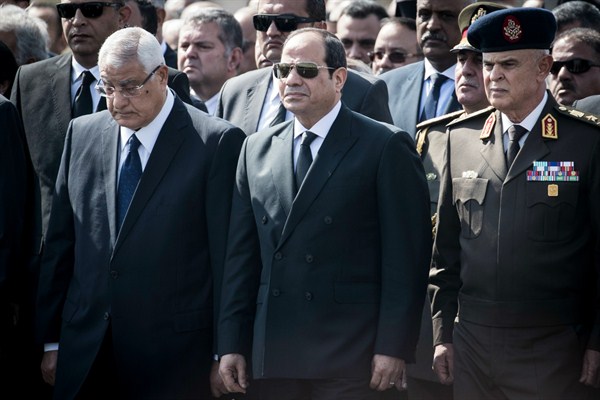When I landed in Cairo in late January 2011 to cover the growing wave of demonstrations that had mobilized Egyptians, I was unsure whether or not the protest movement could topple then-President Hosni Mubarak. After all, he had been ruling for almost three decades, enjoyed Western backing and commanded a robust security apparatus.
But as I drove through downtown Cairo from the airport, I saw the headquarters of Mubarak’s National Democratic Party in flames. It was difficult to see at the time just how much that burning building would come to symbolize about post-Mubarak Egypt. In the end, it took 18 days and the will of millions of Egyptians—hundreds of whom sacrificed their lives—to oust the country’s longest-serving modern ruler.
After Mubarak died last week, at the age of 91, President Abdel Fattah el-Sisi’s government gave him a military funeral that emphasized not his achievements as president, but his role in the 1973 war against Israel. For the current rulers of Egypt, Mubarak the air force commander is much easier to digest than Mubarak the president. As a ruler, Mubarak was a corrupt and repressive autocrat who was ultimately brought down by his people. For Sisi, he is an uncomfortable reminder of Egypt’s lingering potential for revolution.

